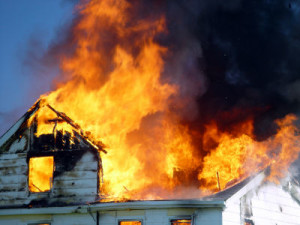Save Energy With Cap Dampers & Damper Locks
Energy savings can add up quickly month to month when you invest in small changes. In the case of your chimney, we highly recommend purchasing a cap damper, which is installed at the top of your chimney, sealing it tightly when your fireplace is not in use. This helps to keep conditioned-air or heat inside your home, while also preventing intrusions from entering your home.
When your indoor air escapes out your chimney or flue, your cooling system is forced to work overtime to keep your home at a comfortable temperature. Cap dampers work more efficiently than the old-style throat dampers, ensuring you don’t waste money cooling or heating the outdoors. They also have many other countless benefits!
Benefits Of Cap Dampers
Cap dampers, also called top-sealing dampers, offer pretty much the same benefits as a chimney cap. They offer double protection while also providing you a peace of mind when your fireplace is not in use. They are great for keeping out water and excess moisture as well. When water enter your chimney and fireplace, this can cause your brickwork to crumble, the liner to break, and all kinds of other issues such as rotting, mold accumulation, and rust. This means expensive repair work while your fireplace is also not suitable for use.
Water damage are even more dangerous when homeowners are not aware of these issues. It makes you home and family more vulnerable to gas leaks, chimney fires, and house fires. Don’t put your family at risk and get the protection with a cap damper.
Cap dampers also ensure animals and other debris from entering your home. Nesting materials, excess dirt, and critters can clog your chimney, preventing the proper air flow of your chimney. When smoke and fumes can’t vent properly, they’ll back up into your home and cause the overall performance of fireplace to decline.
What Is A Damper Lock?
According to California code and regulations, homes with a gas-fueled fireplace need to have a damper lock. A damper lock is extremely beneficial, and it also provides added protection to your chimney and home. But what is a damper lock and how do they work?
Damper locks are put in place to lock your damper, both the open and close function. Unfortunately, it’s very common for homeowners to forget to open their damper, and this can be life-threatening especially if you have gas appliances. With wood-burning options, you’ll see smoke and fumes right away, letting you know that the damper is closed. However, gas-fueled fireplaces aren’t quite as obvious. It could cause carbon monoxide, a colorless and odorless gas, to enter your home and cause life-threatening issues.
We are experts at cap dampers and damper locks, call us if you have any questions or concerns. We have years of experiences helping our customers with their fireplace and chimney system, and we can’t wait to help you too! Give our team a call today at 619-338-8116.

